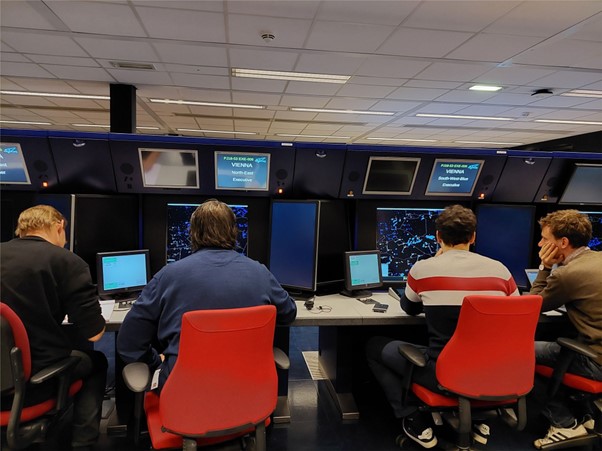SESAR JU founding member, Airtel ATN, has announced the equipage of 10,000 aircraft with an airborne router to facilitate communications by datalink between pilots and air traffic controllers. The milestone for Airtel ATN is paving the way for the uptake of key SESAR trajectory management solutions, enabling more efficient and safe air traffic operations.
Data communications between pilots and air traffic controllers are designed to replace routine voice exchanges and to link air traffic control ground systems with flight deck avionics to support air traffic clearances, instructions, traffic flow management inputs, and flight crew requests.
Specifically, the equipage will make possible the use of automatic dependent surveillance – contract (ADS-C), allowing aircraft to downlink and share their predicted trajectory (extended project profile, speed schedule) from the flight management system (FMS) to the ground system tools. The data is fed into controller support tools, allowing controllers greater situation awareness, and the ability to better detect and resolve possible trajectory conflicts. Controller-pilot data link communications, CPDLC, allow for a fast exchange of text messages via datalink between air traffic controllers and pilots.

“We are delighted to announce that we have reached another important Data Link milestone," said Santi Ibarz, CEO at Airtel ATN. “We now have 10,000 Data Link enabled aircraft, many of which are now flying with latest ATS B2 technology (CPDLC, ADS-C) developed with SESAR support meet the Commission implementing regulation (EU) 2021/116 of 1 February 2021, so called Common Project One (CP1) mandate. It's a real testament to the continued commitment and support from our OEM community. Our dedication to shaping the future of aviation communications remains unwavering.”
The SESAR JU is developing technical and operational solutions to meet the Common Project #1 requirement for European air navigation service providers (ANSPs) to exchange trajectory data with flights in Europe from 2027.
Much of this work has been done within the context of the now completed ADSCENSIO large-scale demonstration and 4DSkyways industrial research projects, which addressed:
- ground trajectory prediction and separation management/monitoring tools by using aircraft trajectory data, more precise meteo data, improved algorithms and machine learning techniques.
- complex CPDLC clearances sent in advance of the horizontal, vertical and longitudinal trajectory change to enhance the synchronisation of the airborne trajectory with the ground trajectory.
- ground-ground and air-ground exchanges between the European ATM actors by consolidating the different initiatives and bridging the gaps.
- A trajectory common service as an alternative architecture for trajectory exchanges between ground ATM actors.

More about trajectory management solutions:
